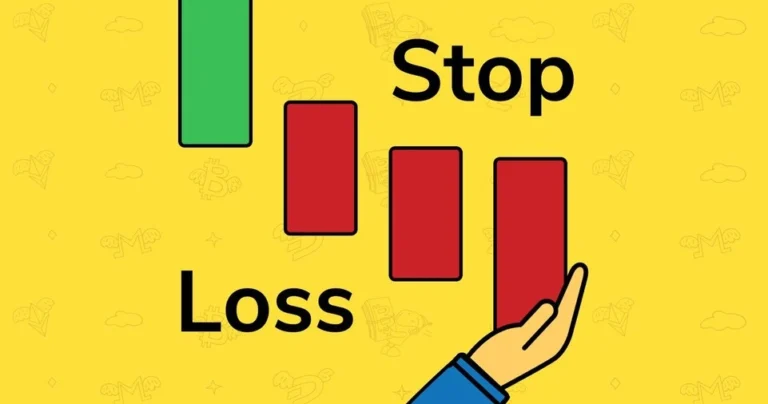Crypto trading has gained immense popularity in recent years due to the high volatility and profit potential in the market.
However, with volatility comes risk, making it crucial for traders to implement strategies that protect their investments from large, unexpected losses.
One such strategy is the stop-loss order, which is a powerful tool that allows traders to set specific price points at which their positions will be automatically closed if the market moves against them.
By using a stop-loss strategy, crypto traders can limit their losses, lock in profits, and trade with greater peace of mind.
The volatility of the cryptocurrency market is one of the main attractions for traders, but it is also a significant risk factor.
Prices of cryptocurrencies like Bitcoin, Ethereum, and smaller altcoins can swing drastically within a matter of hours or even minutes.
Without a stop-loss in place, traders risk seeing their investments wipe out in moments.
In this comprehensive guide, we will explore how to use stop-loss strategies effectively, the different types of stop-loss orders, and how to set them up on crypto trading platforms.
Whether you’re a beginner or an experienced trader, understanding and implementing stop-loss orders can help you manage risks and improve your trading performance.
Understanding Stop-Loss Orders in Crypto Trading
A stop-loss order is an instruction you give to your broker or crypto exchange to automatically sell your position when a specific price point is reached.
This type of order is designed to help traders protect their investments from larger-than-expected losses by automatically closing a position before it drops too far.
What Does a Stop-Loss Order Do?
A stop-loss order triggers a sale of your asset once the price reaches or falls below a pre-set threshold.
The main purpose of a stop-loss is to prevent excessive losses from market downturns.
For example, if you bought Bitcoin at $40,000 and set a stop-loss order at $38,000, the system will automatically sell your Bitcoin if its price falls to $38,000, limiting your loss to $2,000.
The stop-loss order serves as a fail-safe mechanism for traders who may not be monitoring the markets constantly.
While it cannot guarantee that you won’t lose money (since markets can gap over stop-loss levels), it does provide a strategy to mitigate risk and avoid panic-driven decisions.
Why Use a Stop-Loss in Crypto Trading?
The primary reason for using stop-loss orders is to limit potential losses. The crypto market is notorious for its volatility, with prices subject to sudden and sharp fluctuations.
Even if a trader has strong convictions about a particular asset’s long-term potential, there’s always a chance that short-term market movements could take a position into the red.
A stop-loss order ensures that your risk is controlled and that your trading plan is adhered to, even in times of extreme market movements.
How to Choose a Stop-Loss Percentage in Crypto Trading
One of the key decisions traders must make when implementing a stop-loss strategy is deciding the percentage of loss they are willing to accept.
Determining your stop-loss percentage depends on your risk tolerance, trading strategy, and the volatility of the asset you’re trading.
Setting Your Risk Tolerance
Risk tolerance is an individual measure of how much risk a trader is willing to accept in order to achieve a potential reward.
For crypto trading, many traders limit their risk to a small percentage of their total trading capital to prevent significant drawdowns.
A common rule of thumb is to risk no more than 1%-2% of your total portfolio per trade.
This means if your trading capital is $10,000, you would limit your losses to $100-$200 per trade.
Consider Volatility
Cryptocurrencies are known for their extreme volatility, so setting a tight stop-loss percentage on a highly volatile asset might result in your stop-loss being hit prematurely.
Conversely, setting too wide of a stop-loss might expose you to large losses.
Consider a stop-loss of around 5% to 10% for more volatile cryptocurrencies, such as smaller altcoins, and a tighter range for less volatile assets like Bitcoin or Ethereum.
Identifying Key Price Levels for Your Stop-Loss

Before you set a stop-loss order, it’s essential to identify key price levels based on technical analysis.
These levels will help determine the most logical points to set your stop-loss order to avoid being caught in market noise.
Support and Resistance Levels
Support levels are price points where an asset tends to find buying interest, causing the price to reverse and go higher.
Resistance levels are price points where selling interest increases, causing the price to reverse and go lower.
Understanding where these levels are located on the chart helps you place your stop-loss orders more effectively.
A stop-loss is often placed just below the support level for a long position or just above the resistance level for a short position.
This minimizes the chances of the order being executed by minor price fluctuations while still allowing the trade to run if the asset remains within a favorable price range.
Using Moving Averages for Stop-Loss Placement
Moving averages (MAs) are another popular tool for determining potential stop-loss levels.
A 50-day moving average (MA) or 200-day moving average (MA) can act as dynamic support or resistance, and placing a stop-loss order near these averages can provide a buffer against market volatility.
For example, if you’re trading Ethereum, and the 50-day moving average is at $1,800, you could place your stop-loss just below $1,800 to account for short-term price fluctuations while protecting your position.
ALSO READ: How to Set Up Automated Trading in Cryptocurrency
Types of Stop-Loss Orders in Crypto Trading
There are various types of stop-loss orders, each serving different purposes.
Here’s an overview of the most commonly used types in crypto trading.
Fixed Stop-Loss
A fixed stop-loss order is the most straightforward type. It’s a single price point at which you want to exit the trade if the market moves against you.
For example, if you buy Bitcoin at $30,000, you might set a fixed stop-loss at $28,500, which means the order will trigger a sale if the price falls to $28,500.
Trailing Stop-Loss
A trailing stop-loss is a dynamic stop-loss that moves with the market. Unlike a fixed stop-loss, it adjusts itself according to favorable price movements.
This strategy allows traders to lock in profits while ensuring that the trade remains open as long as the price continues to rise.
For example, if you set a trailing stop-loss at 5%, and Bitcoin’s price rises from $30,000 to $32,000, your stop-loss will automatically adjust to $30,400 (5% below the new high).
This prevents the stop-loss from being triggered by minor dips while still protecting profits.
Market Stop-Loss
A market stop-loss is an order that is executed immediately at the current market price when the stop-loss level is reached.
While this guarantees execution, it can sometimes lead to slippage, especially during periods of high volatility.
In fast-moving markets, the price can jump past the stop level, resulting in a higher-than-expected loss.
Stop-Limit Orders
A stop-limit order combines the stop-loss and limit order types.
When the stop price is reached, the order becomes a limit order rather than a market order.
This type of order can help you control the price at which your trade is executed, but there is a risk that the order may not fill if the price doesn’t reach the limit.
Using Risk-Reward Ratios in Crypto Trading

When implementing a stop-loss strategy, it’s essential to consider the potential reward compared to the risk you are willing to take.
A risk-reward ratio helps you assess whether a trade is worth entering based on your stop-loss placement.
How to Calculate Risk-Reward Ratio
The risk-reward ratio compares the amount you’re willing to lose to the amount you expect to gain.
For example, if you set a stop-loss of $100 and a target profit of $300, your risk-reward ratio is 1:3.
A good rule of thumb is to aim for a minimum of 1:2 or 1:3 risk-reward ratio. This ensures that the potential reward justifies the risk you’re taking.
Setting Targets and Stop-Losses Based on Risk-Reward
For every trade, you should determine a logical price target based on technical analysis.
Once you have that target, use the risk-reward ratio to set your stop-loss in such a way that the potential reward is always higher than the potential loss.
This disciplined approach helps ensure that even if some trades result in losses, your overall performance remains profitable.
How to Set a Stop-Loss on Crypto Trading Platforms
Most crypto exchanges and trading platforms allow traders to set stop-loss orders easily.
The process involves selecting the asset, specifying the stop-loss price, and entering the amount you wish to trade.
Step-by-Step Guide to Setting Stop-Loss on Exchanges
- Log in to your trading platform (e.g., Binance, Kraken, Coinbase Pro).
- Select the asset you want to trade, such as Bitcoin or Ethereum.
- Click on the “Sell” button or create an order.
- In the order form, choose the “Stop-Loss” option.
- Set your stop-loss price (e.g., $28,500 for Bitcoin).
- Specify the amount of crypto you wish to sell if the stop price is triggered.
- Click “Confirm” to finalize the order.
Monitor Your Orders
After setting a stop-loss order, monitor the price movement and ensure the trade is executing as expected.
While stop-loss orders can protect against large losses, they are not foolproof, especially in volatile markets.
ALSO READ: How to Short-Sell Cryptocurrencies: A Complete Guide
Conclusion: Mastering Stop-Loss Strategy in Crypto Trading
In the world of crypto trading, volatility is both an opportunity and a challenge.
By incorporating a well-thought-out stop-loss strategy into your trading plan, you can mitigate the risks associated with sudden market shifts, minimize emotional trading, and protect your profits.
Whether you choose a fixed stop-loss, trailing stop-loss, or stop-limit order, the key to successful trading is consistency.
Establish clear rules for when and where to place your stop-loss, and always stick to them, no matter how tempting it may be to adjust them based on short-term market movements.
As crypto markets continue to evolve, having a reliable stop-loss strategy in place will give you the confidence to navigate the ups and downs of the market while keeping your capital safe.











